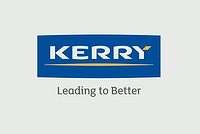Over the last few years, the clean-label movement has advanced from its fledgling roots to become de rigueur in global food and beverage production, and the result has been a total redefining of the rules of the game. Increasingly, consumers are both aware of and actively seeking products with cleaner, shorter labels (i.e., fewer “chemical” names that they perceive as potentially unsafe, unhealthy or of low quality). Addressing these accelerating demands is a challenge that can present financial risk for food producers, while ignoring them is simply no longer an option for companies that wish to survive and prosper.
Nowhere are these challenges greater than in meat production, where food safety is subject to widespread concerns around both health and cost. Coming to the rescue today—and being warmly welcomed by manufacturers looking to meet demand and avoid unnecessary safety and financial risk—are clean-label advances that work to protect and enhance meat quality and shelf life.
These days, food safety is top of mind around the world. A recent, extensive Kerry Cleaner Label survey of consumer attitudes in the Middle East, Africa, and the Asia-Pacific region on the subject of safety, health, and the environment found that the top six clean-label concerns in these areas all related to food safety. As one of the largest consumers of meat products in the world, it’s the same in Latin America, where 90 percent of respondents in a recent Kerry survey consider it important that products be made from clean ingredients. In that region, consumers also consider a clean label to be closely related to product nutrition.
The U.S. and Europe are not immune to safety concerns. A couple of recent examples help explain the global nature of this public concern. In the fall of 2019, Listeria outbreaks in Belgium and the Netherlands were linked to cold charcuterie and in the U.S., a November 2019 outbreak of Salmonella from raw beef left one person dead and eight in hospital across six states.
More recently, the coronavirus disease (COVID-19) outbreak has led to consumer stockpiling food and switching to home cooking from eating out, which has disrupted supply chains and restaurant practices. It has also focused public attention on meat safety practices globally.
Until relatively recently, chemical preservatives were the best food safety solution and, arguably, were responsible for many of the food safety advances of the 20th century. Today, however, the most important clean-label consumer desire around meat and fish globally is a call for no artificial additives or preservatives. This has led to a search for clean-label solutions to address the public’s opposition to chemical preservatives without sacrificing the safety or quality of the products. It is a significant challenge, but one that is being successfully addressed.
Nitrites and Nitrates Are Vilified
In the U.S. and Europe particularly, sodium nitrates and nitrites, used as preservatives, are vilified due to their links to colon cancer and other health issues. According to one Kerry research report entitled The Top Consumer No-No Ingredients for Meat by Generation, baby boomers and seniors aged 54 and over are more likely than millennials to reject these additives; this is important, as older adults are the largest consumers of hot dogs, sausages, and luncheon meats.
Demographics notwithstanding, food-quality concerns cut across all age groups. In fact, a full 47 percent of consumers are “label-conscious,” taking the time to read ingredient lists. Not surprisingly, the research found that they fully reject chemical preservatives as a category; interestingly, when it came to identifying ingredients that act as preservatives from a variety of product labels, all unfamiliar/chemical-sounding ingredients were vilified equally regardless of their actual makeup.
This was confirmed in a 2019 Health Focus International study of 22 countries that found that 66 percent of parents rated the absence of preservatives either “extremely important” or “very important.” All of this highlights the strength of using familiar ingredients on product labels and reinforces the need for targeted consumer education with respect to food labeling.
Amid the wholesale consumer rejection of chemical preservatives, three possible negative outcomes get an unwelcome boost: 1) an increased risk to food safety due to spoilage; 2) degradation of meat appearance and taste during shelf life; and 3) unnecessary food wastage. Currently, global food loss and waste amounts to between one-third and one-half of all food produced, with the U.S. making up some 40 percent of the total (and the highest per capita quantity of food loss) worldwide. Viewed by category, baking has the largest volume of waste, while meat has a higher overall value of waste; in fact, meat is the costliest category when it comes to any food waste. Finding natural means to protect meat and extend shelf life delivers incredible value to consumers, producers and society as a whole.
Replacing Artificial Preservative Functionality Presents Its Own Challenges
In the U.S., there is a U.S. Department of Agriculture Food Safety and Inspection Service (USDA FSIS) that ensures the commercial supply of meat, poultry, and egg products is safe, wholesome, correctly labeled, and packaged. For ready-to-eat and cured meats, there are specific regulations that require meat processors to employ more effective measures to control Listeria monocytogenes, for example, in cases where the product is exposed to the environment after lethality treatments, such as when a ham is sliced after cooking.
Traditional ingredients such as lactates and diacetates are widely used to extend shelf life of ready-to-eat products via reduction of spoilage organisms. They also provide protection against the outgrowth of Listeria, as required by FSIS rules for ready-to-eat meats. However, they are not allowed in USDA products that carry a “natural” claim.
Additionally, in cured products, the traditional ingredient of choice for developing the consumer-appreciated pink color and “ham” flavor is sodium nitrite. Bacon producers may use sodium nitrite as a standalone ingredient, but ready-to-eat applications (e.g., ham and hot dogs) require an antimicrobial in addition in order to protect against Listeria.
While all of these ingredients function well, they do not address the consumer desire for clean-label alternatives, and are on a number of “no-no” lists from a wide range of retailers and foodservice operators.
Today, the prevalence of meat products with a natural claim or a “no preservatives or additives” is growing at a 5.2 percent annual rate, while their chemically assisted counterparts are not seeing growth. This is strong evidence of an ever-expanding consumer desire for preservative-free products. Another new front-of-pack claim has also emerged: “no added nitrites/nitrates except for that naturally occurring in celery.”
In the modern era, the use of consumer-friendly alternatives to synthetic ingredients in meat preservative and protection applications has grown exponentially, confirming their value as highly disruptive clean-label technologies in the $84 billion global meat market. In this case, “disruptive” is exactly what’s needed; what is in need of disruption, simply, is the process of bacterial growth that leads to rapid, premature, and costly food spoilage.
Given meat’s role as the highest-valued spoiled food globally, consumer-friendly preservation advances are impressive not only in terms of public health and food security, but also in a monetary sense. Reduced meat wastage (a significant sustainability advance) and enhanced personal food safety are increasingly viewed by consumers as important in their purchase decisions.
No Magic Bullet
As exciting as any single ingredient can seem in terms of being a food-safety solution, the existence of many different industry and geographic factors that act on a food’s safety means that a single shot—that is, a “magic bullet”—simply doesn’t exist.
In the end, each meat product is subject to a range of unique factors, both external (environment, temperature, humidity, and contamination) and internal (product pH, water activity) that will hinder or encourage the growth of dangerous microorganisms. In addition, geographic and cultural considerations play a role, as do community traditions and standards of food protection. Interpreting and managing all of these variables calls for an integrated, collaborative effort between food protection ingredient suppliers and in-house product development teams, with the best results typically combining both areas of expertise.
Five Key Building Blocks of Clean-Label Food Protection
Often, to combat the multitude of factors that impact a meat product over its shelf life, the ingredient-based portion of any clean-label food protection solution may benefit from a systems approach rather than a single-ingredient focus.
At Kerry, we leverage five main building blocks (umbrella groups of ingredients) that form the portfolio of options available for a fully integrated, comprehensive natural preservation protocol in meat production: 1) fermentation metabolites; 2) various forms of vinegar; 3) natural, functional flavor systems; 4) starter and protective cultures; and 5) plant extracts. What’s most impressive about these items is that they are all consumer-friendly, recognizable solutions that offer consistent results. Their use can be customized and specifically targeted to suit the unique requirements of any particular end meat product, and they can work together to both protect and extend shelf life, delivering high-quality meat products that achieve one of the most important goals: eventual consumption. If not, these products end up as expensive food waste.
The five building blocks can be further described as follows:
• Fermentation metabolites include an array of organic acids, peptides, natural cure, and system-based solutions.
• Vinegar options include dry buffered vinegar, liquid buffered vinegar, and system-based solutions.
• Functional flavor systems provide flavor and enhance freshness; natural flavorings may offer secondary benefits such as color, texture, and shelf life.
• Protective cultures can be starter and combination cultures in both dairy and meat products.
• Plant extracts include citrus-based, natural flavors, and extracts that enhance freshness as well as flavor.
Consumer Research and Ingredient Validation Studies Smooth the Way
Replacing chemical preservatives with clean-label alternatives, and improving the shelf life of a product that has no artificial preservatives of any kind, are two attributes in high demand by a growing number of consumers. Reducing food waste is also of rising concern, for both societal and monetary reasons. Spoiled meat specifically has emerged in recent years as a major public health concern around the world, as its costliness dictates a need for cost-effective, clean-label solutions that will keep it safer for longer. These calls will only grow louder.
Conclusion: Manage Your Expectations When Reformulating
There is no magic wand that will instantly transition meat products away from chemical preservatives to clean-label protection, and it is vital to avoid estranging your current consumer base when you seek to reformulate an existing line for a clean-label alternative. First, consider the end result of your reformulation (product label, cost impact, appearance, storage, etc.), then study the desired outcome and the effect of reformulation on texture, taste, shelf life, and product stability. Second, collaborate closely with your food protection ingredient partners to leverage their extensive experience and formulations expertise; this will be essential in shepherding your meat products through the transformation consumers are demanding.





